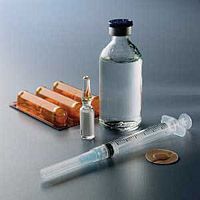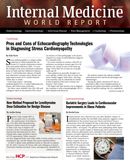Publication
Article
Internal Medicine World Report
New Developments in Insulin Therapy for Type 2 Diabetes
Author(s):
In the American Journal of Medicine, Christopher Sorli, MD, of the Billings Clinic in Montana, reviewed new developments in insulin therapy for type 2 diabetes. He explained that insulin initiation often involved basal-only therapy in conjunction with existing oral glucose-lowering drugs.

Almost 100 years after the first successful clinical use of insulin in 1922 to treat a child with type 1 diabetes, insulin therapy had been an evolving process. There had been accelerated changes in the last 20 years, with the arrival of insulin analogs and new insulin-delivery techniques. Today, the great majority of people with diabetes have type 2 diabetes, for which insulin had not been considered a first-line therapy, because there were many oral treatment options.
However, in recent years insulin had been playing an increasingly important role in type 2 diabetes treatment. Experts had changed their attitudes from one in which insulin has been considered a treatment of last resort only to be used once other efforts have failed. Recent guidelines recommended individualized insulin therapy, particularly using basal insulin, as part of a preventive treatment regimen begun earlier in the disease process to modify it in a positive way. Not only had insulin been shown in a large number of studies to successfully treat type 2 diabetes, patient reluctance to begin insulin was countered by the advent of newer insulin products, injection devices, and titration algorithms that had improved tolerability and reduced fears typically accompanying patients’ perceptions of insulin therapy.
In the American Journal of Medicine, Christopher Sorli, MD, of the Billings Clinic in Montana, reviewed new developments in insulin therapy for type 2 diabetes. He explained that insulin initiation often involved basal-only therapy in conjunction with existing oral glucose-lowering drugs. “Used as supplemental therapy, insulin can rest beta cells and facilitate recovery of the prandial response,” Sorli said, and “early intensive therapy may offer advantages in beta cell preservation in type 2 diabetes.”
Sorli reviewed products in development and new combination therapies, as well as new devices for insulin delivery such as liquid insulin spray, inhaled insulin, continuous insulin pump therapy, as well as products still on the horizon.






